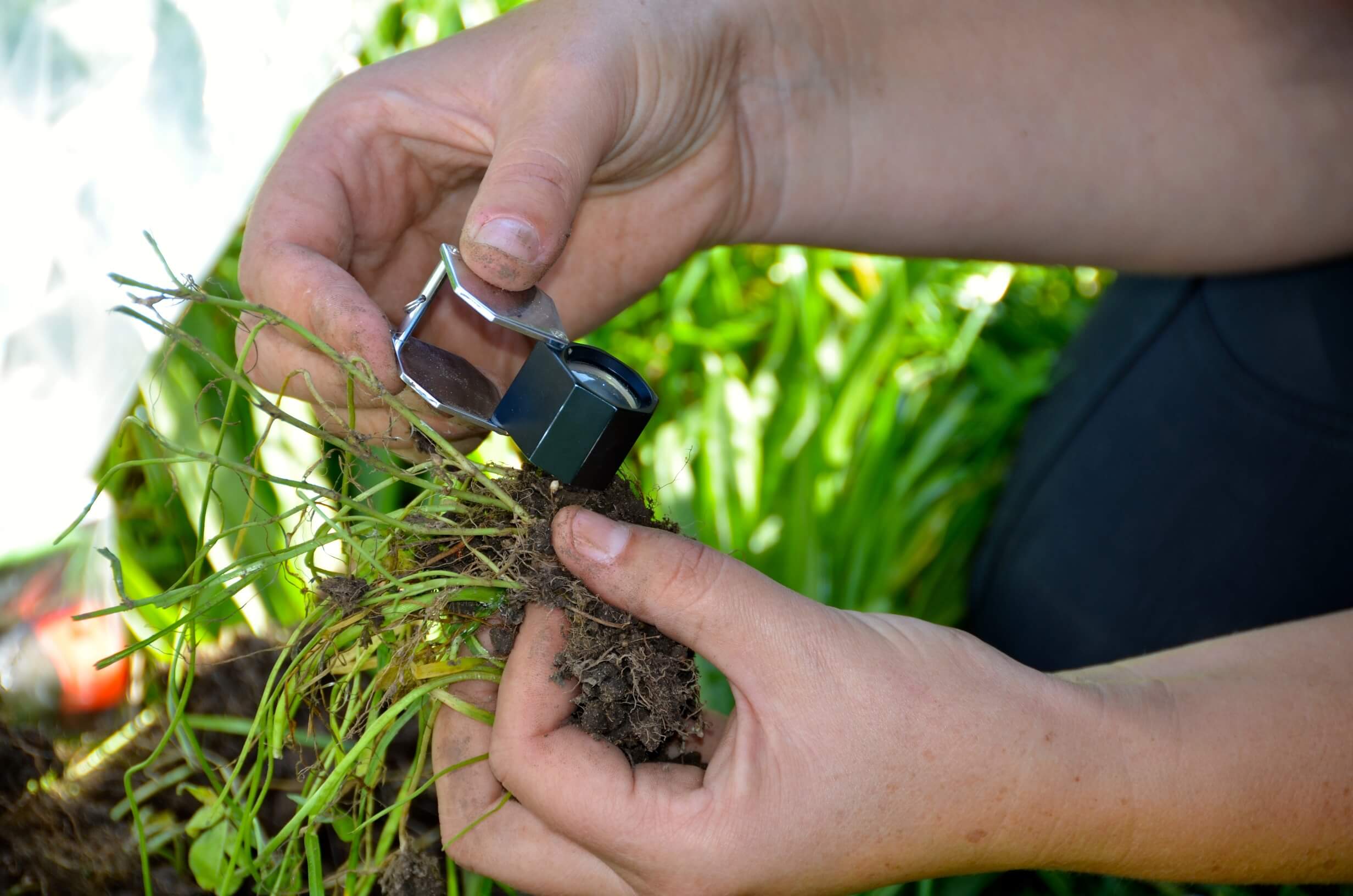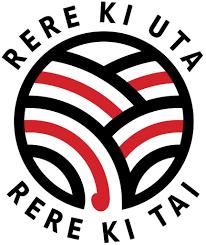KETE | RESOURCES
Our Rangahau | Research
Our research at Rere ki Uta, Rere ki Tai seeks to identify pathways for farming systems that enhance the mana and mauri of the soil, and assess any on-farm changes in soil health, animal wellbeing, milk and meat quality, ecological and environmental health, rural community and kaimahi pāmu (farmer) wellbeing, and farm finances. The research builds on six years of pilot research by AgriSea.

Our Tāhuhu | Mission
Our tāhuhu (mission) is to empower land managers, kaitiaki, and kaimahi pāmu (farmers) to support and implement farming systems that continue to grow the mana and mauri of soil.
Our Whainga | Goals
- Increase the mana and mauri of soil so that it is valued beyond its ‘use’.
- Improve farm and community outcomes: environmental, social, economic, and cultural.
- Increase the value of the Aotearoa New Zealand brand to leverage higher demand/value and confidence in our products for improved returns to the value chain.
Our rangahau has five pou (pillars)
These are interlinked project areas we are investigating. The five pou are:
Analysing the on-farm impacts of land management change
Developing a Mana and Mauri of Soil Assessment Framework
Quantifying any links between soil health and human health
Researching the impact of enhancing the mana and mauri of soil on kaimahi pāmu
Assessing the impact of practices that enhance the mana and mauri of soil on the value chain.
Western Science Trials with Dr Sagara Kumara, Lincoln University
Western Science Study
Connecting soil, plant, animal, and human health
Experimental design and detailed project description
As part of the Rere ki uta rere ki tai work, we have an experiment on 10 hectares of the Lincoln University Sheep Farm from September 2022 to April 2023. A completely randomized experimental design features treatments determined by a 2 × 2 factorial arrangement of:
Pasture: ryegrass-based vs multispecies (Diverse)
Fertilizer: Conventional vs Seaweed (AgriSea biostimulants)
Note: each pasture will be split in half, with each half receiving either conventional or seaweed, grazed by a total of 60 ewes with lambs at 15 per treatment.
Objective
Consumers and producers of animal products are increasingly aware of the intricate connections between the health of the land, animals, and humans, as well as of our collective responsibilities to sustain and enhance the environment for future generations (Gregorini and Maxwell, 2020). Consequently, Land users, policymakers and wider society are calling for alternative approaches (Taiao ora, (https://fitforabetterworld.org.nz/taiao/) to pastoral systems; a call for functionally diversified-adaptive, and integrative, agro-ecological and food-pastoral systems that simultaneously operate across multiple scales and ‘scapes’ (Duru et al., 2015; Leroy et al., 2020; FAO, 2020). From landscapes and foodscapes to healthscapes (Provenza et al., 2015a,b; Gregorini and Maxwell, 2021; Provenza et al., 2021).
Lincoln University Pastoral Livestock Production Lab research indicates that grazing phytochemically diverse forages improves animal welfare and environmental health (Beck and Gregorini, 2020 and 2021; Garret et al., 2021; Marshall et al. 2021).
More specifically, suggesting that plants (terrestrial or aquatic) with particular secondary chemical bioactive compounds (such as tannins, terpenoids, phenols, carotenoids and anti-oxidants, with known anti-inflammatory, anti-cancer, and heart-health promoting effects) reduce oxidative and physiological stress in grazing ruminants, while increasing animal performance and feed conversion efficiency (van Vliet et al., 2020; Beck and Gregorini, 2020, Garret et al. 2021a, b, c).
For instance, diets containing seaweed and seaweed extracts combined specific terrestrial plant extracts increased total antioxidant levels, reduced oxidative and physiological stress in grazing cattle and sheep, enhancing hedonic and eudemonic well-being (Beck 2020).
Plant secondary bioactive compounds are exudated by those plants’ roots to the soil, enhancing soil macrobiota and influencing nutrient dynamics; and livestock consuming those phytochemically rich plants excrete some of those compounds, enhancing or adding to the benefits coming from those plants’ effects per se (Clemensen et al., 2021).
Synthetic fertilizer application, however, destroys soil biodiversity by suppressing the role of nitrogen fixing bacteria and enhancing the role of everything that feeds on nitrogen. These feeders then amplify the decomposition of organic matter and humus.
As organic matter decreases, the physical structure of soil changes, reducing soil life and health. These changes lead to modulations in various associated soil physiological processes, affecting plant nourishment and nutrient supply of herbivores.
Some studies (Mehdi et al., 2020) suggest that seaweed-based bioactive treatment in soil and plants causes significant changes in the microbiome components of the soil, enhancing it health and the plants growing on it, which contributes to plant growth and changes in chemical composition of plant material.
Value Chain
Consequently, animal products that incorporate phytochemically rich forages growing on healthy soils – and fostering not only environmental, soil and livestock, but also and most importantly human health – presents an opportunity to transform pastoral agriculture of livestock and counteract negative connotations of animal products, and proposes ethical and sustainable foodscapes with animal products promoting integral health.
Not only is this in tune with the land and animal, but integrally healthier for us and the land we all inhabit. Ultimately, we are what we eat eats! (Gregorini et al., 2017).
Further details on Phase 1 and 2: Soil, pasture, and animal production and health
In the first phase (lambing to weaning), we will evaluate the effect of treatments on animal health, rumen microbiome and milk composition (See below). Plasma metabolites (total oxidative status, malonaldehyde A, non-esterified fatty acids (NEFA), blood urea N (BUN)), will be evaluated monthly for all animals, while liveweight changes will be measured fortnightly during the first phase and the second one, i.e. lamb finishing period, for all animals.
After weaning-Second Phase: Lambs will be finished according to treatments. They will be grazing the treatments pastures for ~90 days before slaughter at a commercial abattoir in accordance with Ministry of Primary Industries. Following slaughter, meat quality/carcass (dressing out, carcass weight, intramuscular fat content, marbling) characteristics well be evaluated. A sample (~50 g) of meat collected from the longissimus dorsi muscle of lambs will be collected homogenised, mixed thoroughly, and a random sub-sample collected for metabolomic analyses before storage at -20℃.
The individual animal will be considered as the experimental unit, as the use of blocking or grouping in this experimental design is not practical given the area available, animal management in small herds and small areas. Furthermore, all variables other than metabolomics of the meat produced (i.e. liveweight/liveweight gain and plasma measurements of oxidative stress and adipose mobilisation) will be measured repeatedly, in which the animal at each point in time will be used as the experimental unit.
If the individual animal is considered as the experimental unit, with an expected CV of 14% as reported previously for a-tocopherol concentrations (vitamin E, an antioxidant that increases in ruminants fed pasture and tannins), a minimum true difference of interest of 12% would be detectable with an experimental power of 80% and the desired level of significance of 0.05.
All paddocks will be grazed rotationally, using temporary electric fencing materials. Herbage mass will be estimated by pre-and post-grazing herbage dry matter (DM) mass within two randomly placed 0.2 m2 quadrats. Herbage (new pasture break) will be allocated to the animals every 7-days. Samples of herbage will be analysed for complete/mixed pasture profiles (collected by gathering ~ 10-20 random grab samples of herbage). Herbage samples will be collected each fortnight throughout the finishing period to evaluate the nutritive content of the forages. A representative sub-sample of herbage will be taken from each measurement to evaluate each forage metabolomic profile. Soil samples from those trial paddocks will be collected 3 times (from November 2022 to April 2023) according to the modified method (Please refer to the PPT file “modified methodology-soil sampling layout”) developed by Agrisea, Landcare (Manaaki Whenua), and Lincoln University.
The meat samples will be analysed for the total metabolite profile —terpenoids, phenolics, carotenoids, tocopherols, nucleotides, xenobiotics, vitamins, minerals, lipids, amino acids, sugars, and organic acids- using a non-targeted, liquid chromatography-mass spectrometry approach.
Milk composition and rumen and microbiome
Samples for milk composition and rumen microbiome will be collected twice (approx. 4 wk after lambing and immediately before weaning) from randomly selected focal ewes (n = 7 ewes per treatment). Stripping method will be used for milk sample collection.
Blood and rumen samples
Ewes will be sampled for blood, and ruminal fluid. Lambs of these ewes will be sampled for rumen fluid and blood, but only at weaning.
Rumen fluid will be collected through an oesophageal tube as described in the SOP 88 http://hub.lincoln.ac.nz/Research2016/SitePages/RCC-Ethics-Animal.aspx , and adapted for sheep. In brief, animals will hold by holding the head with one arm and gently manipulating the animal to open their mouth and place a speculum to keep the mouth slightly open. Then a lubricated tube connected at one end to a large volume syringe will be guided through the speculum down the oesophagus and into the reticulo-rumen. Ruminal contents will then be aspirated by creating a vacuum with the syringe. The liquor will be transferred into container vials and frozen until further processing. Ruminal liquor will be analysed for microbiome as described by Marshall et al. (2021).
Phase 3: Human health
Eating lamb patties for science? Yes that’s really a thing. Read our human health trial media release.
The experiment will be conducted in Lincoln University during June 2023, under a completely randomized experimental design with treatment to humans being the meat of lambs finished on the above-mentioned pastures -treatments- of phase 1 and 2.
We will recruit 96 (24 per group) otherwise healthy, non-smoking adults with at least one cardiometabolic risk factor (obese, hypertension, pre-diabetic, hyperlipidaemia) through digital advertisements using social media methodology, medical centre newsletters, and local newspaper advertisements.
References
Bello, N. M., Kramer, M., Tempelman, R. J., Stroup, W. W., St-Pierre, N. R., Craig, B. A., … & Gbur, E. E. (2016). On recognizing the proper experimental unit in animal studies in the dairy sciences. Journal of dairy science, 99(11), 8871-8879.
Iason, G. R., & Elston, D. A. (2002). Groups, individuals, efficiency and validity of statistical analyses. Applied Animal Behaviour Science, 3(75), 261-265.
Lobón, S., Sanz, A., Blanco, M., Ripoll, G., & Joy, M. (2017). The type of forage and condensed tannins in dams’ diet: Influence on meat shelf life of their suckling lambs. Small ruminant research, 154, 115-122.
Hunter, T. E., D. Suster, K. DiGiacomo, F. R. Dunshea, L. J. Cummins, A. R. Egan, and B. J. Leury. 2015. Milk production and body composition of single-bearing East Friesian×Romney and Border Leicester×Merino ewes. Small Rumin. Res. 131:123–129
Marshall C. J.,K. Garrett, M. R. Beck, PAS, G. K. Barrell, O. Al-Marashdeh, and P. Gregorini. 2021. Differences in the microbial community abundances of dairy cattle divergent for milk urea nitrogen and their potential implications. Applied Animal Science
Volume 38, 62-69
Yusuf, O. M., C. M. Logan, A. Ridler, and A. W. Greer. 2018. Investigation into udder characteristics, mastitis and milk production in crossbred sheep. New Zeal. J. Anim. Sci. Prod. 78:82–87.
Hear It From The People
Get updates on our research progress, findings, and tools that you can apply on your land.

